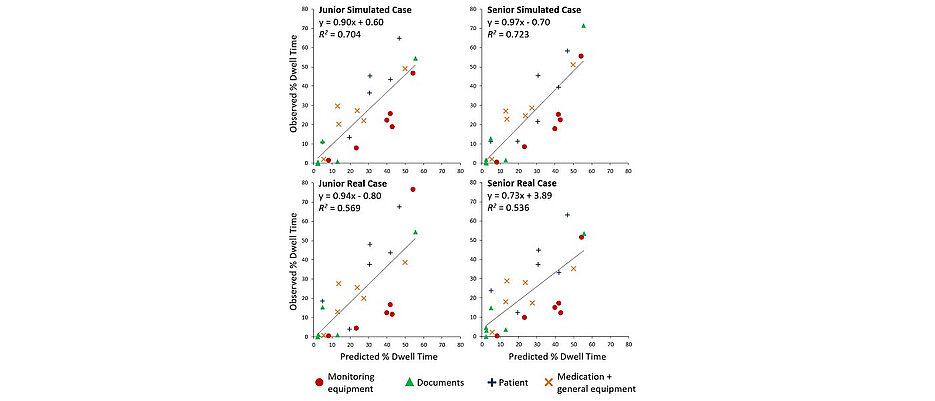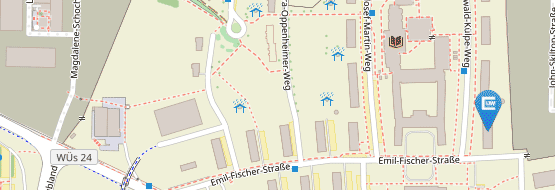Neuer Artikel über die Verteilung von visueller Aufmerksamkeit von Anästhesisten erschienen
06.05.2020Tobias Grundgeiger vom Lehrstuhl Psychologische Ergonomie hat zusammen mit Thomas Wurmb und Oliver Happel vom Universitätsklinikum Würzburg einen neuen Beitrag in der Zeitschrift IEEE Transactions on Human-Machine Systems veröffentlicht.
In dem Artikel “Modelling visual attention of junior and senior anesthesiologists during the induction of general anesthesia in real and simulated cases” wird gezeigt, dass die visuelle Aufmerksamkeitsverteilung von Anästhesisten anhand von zwei Parametern (Erwartung einer Veränderung eines bestimmten Objekts und Wert der Veränderung eines bestimmten Objekts) gut vorhergesagt werden kann.
Grundgeiger, T., Wurmb, T., & Happel, O. (2020). Modelling visual attention of junior and senior anesthesiologists during the induction of general anesthesia in real and simulated cases. IEEE Transactions on Human-Machine Systems. https://doi.org/10.1109/THMS.2020.2983817
Zusammenfassung
In visually rich working environments, it is important for operators to distribute their visual attention in an optimal fashion in order to operate safely. Computational models can provide a systematic method of investigating the attention distribution of humans. In this article, we reanalyze eye tracking data from anesthesiologists when inducing general anesthesia to test whether the so-called expectancy value version of the salience, effort, expectancy, value (SEEV) model can accommodate the visual attention distribution of anesthesiologists, and to investigate the effect of case (real versus simulated cases) and experience (junior versus senior) on the expectancy value model fit. The overall model fit is good (predicted-observed percentage dwell time correlation of 0.810, R2 = 0.656). We observe that the model fit is better in simulated cases than real ones. In addition, the model fit is good for junior anesthesiologists independent of the case, but that there is an even better model fit in simulated cases than in real ones for senior anesthesiologists (case × experience interaction). Overall, the expectancy value model can be validated. However, at least within the context of anesthesiology, the full SEEV model may be needed to capture the large and distractive visual work environment of anesthesiologists. From a practical point of view, previous research suggested that anesthesiologists pay more attention to monitoring in simulated cases. However, the SEEV analysis suggests that anesthesiologists do not pay extra attention to monitoring equipment in simulated cases, but may not be able to pay enough attention to monitoring equipment in real cases.
Zurück



